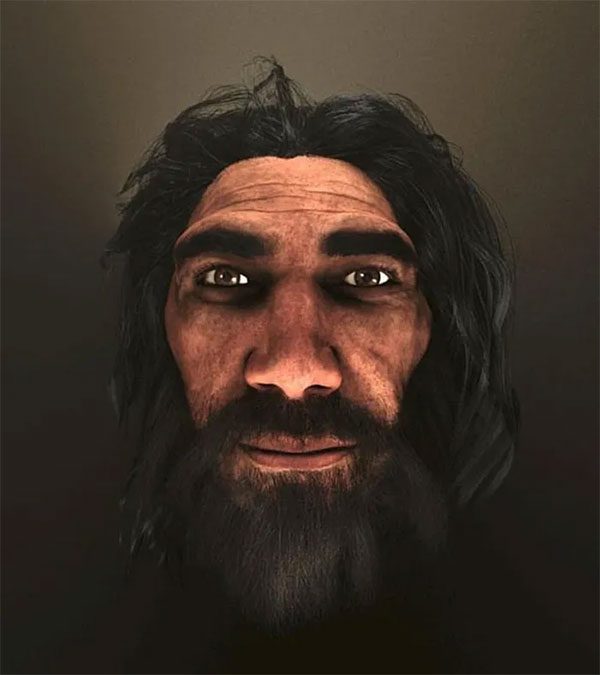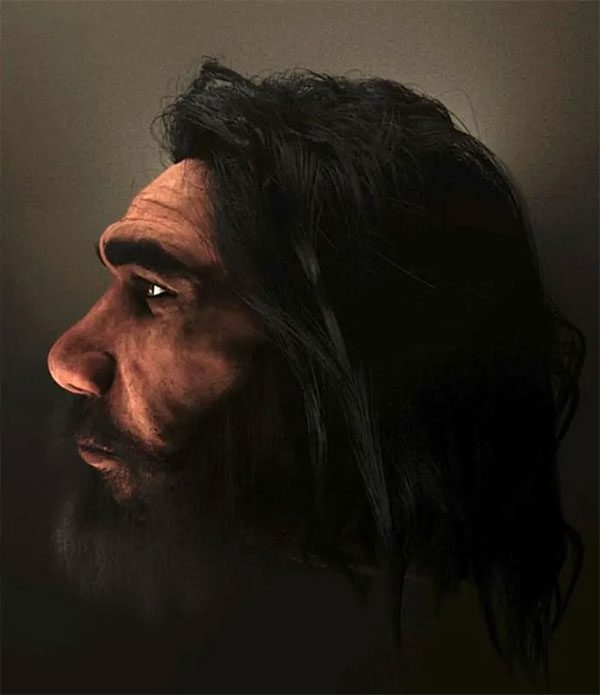The man recently “resurrected” in 3D in a laboratory in Greece is a Homo heidelbergensis. This is an “brother” species of the genus Homo, distinct from modern humans, and now extinct.
Homo heidelbergensis is one of the most enigmatic species of the genus Homo, which includes some of the most “advanced” primates, having physically evolved beyond the world of apes. This genus includes us, the species “wise man”, Homo sapiens.
In a new study, Greek scientists utilized rare fossil records to successfully create a virtual 3D version of a Homo heidelbergensis man.

Portrait of the 35-year-old man belonging to the extinct species Homo heidelbergensis – (Photo: Journal of Archaeological Science: Reports).
The project led by anthropologist Christina Papageorgopoulou from Democritus University of Thrace (Greece) contributes to a better understanding of this mysterious yet significant species in human history.
Homo heidelbergensis is believed to be the first species of the genus Homo to conquer colder climates. They also possessed the capability to craft and use quite sophisticated tools.
The existence of Homo heidelbergensis lasted from about 700,000 to 200,000 years ago, meaning that when our species, Homo sapiens, appeared on Earth, this relative still existed for another 100,000 years.
However, unlike Neanderthals or Denisovans, there is no evidence of close coexistence between communities of Homo heidelbergensis and Homo sapiens, nor any signs of ancient interbreeding with this species in modern human DNA.
The man who was “resurrected” in the laboratory this time is the result of reconstructing a skull excavated from the Petralona Cave in northern Greece. Based on preserved features, scientists estimate that he was a healthy male, 35 years old.
He weighed only about 52 kg, roughly equivalent to the average weight of a female Homo sapiens, as Homo heidelbergensis were generally shorter than us.
This individual is also an early Homo heidelbergensis, as the fossil has been dated to approximately 609,000 years ago.
The characteristic sloping forehead, prominent brow ridges, and rugged facial features are key traits that distinguish them from Neanderthals and Homo sapiens, the two species considered “anatomically modern.”
The study recently published in the Journal of Archaeological Science: Reports also reveals that to accurately “resurrect” this man’s likeness, the research team had to utilize a range of technologies in medical imaging, geometric morphology, ancient DNA, 3D scanning, image processing, and virtual reality.

Profile portrait of our extinct brother – (Photo: Journal of Archaeological Science: Reports).
Fossils of Homo heidelbergensis have been discovered in Germany since 1907, and subsequently in Ethiopia, Zambia, Tanzania, Greece, and France.
An enigmatic specimen known as “Dali”, excavated in China, is also suspected to be a Homo heidelbergensis.


















































